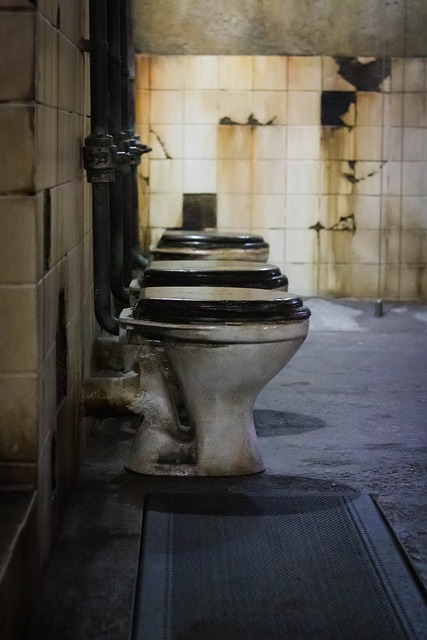Recognizing a running toilet saves water, reduces bills, and simplifies DIY repairs. Symptoms include constant water flow, loud rushing sounds, and elevated tank water levels after flushing. The problem often stems from flapper or fill valve issues, easily fixed with simple steps. Regularly checking the flapper, fill valve, float, and ballcock ensures optimal toilet performance and prevents future running issues. Learn 'How to Stop a Running Toilet' through targeted maintenance and fixes.
Tired of that relentless running toilet? You’re not alone. A leaking flapper, faulty fill valve, or stuck components can waste hundreds of gallons of water each year. This guide dives into identifying common running toilet problems and offers step-by-step solutions for fixing a leaky flapper, adjusting the fill valve, and addressing stuck parts. Learn how regular maintenance and DIY tricks can help prevent costly repairs and conserve precious water. Discover when to call in the pros and explore eco-friendly tips for a more sustainable bathroom.
- Identifying the Problem: Recognizing a Running Toilet
- – Symptoms of a running toilet
- – Understanding the components: flapper, fill valve, float, and ballcock
Identifying the Problem: Recognizing a Running Toilet

Recognizing a running toilet is the first step in fixing the problem. A toilet runs continuously or fills up faster than usual, wasting water and increasing your utility bills. It could be caused by a leaky flapper, a faulty fill valve, or an improper float setting.
To determine the exact issue, observe the toilet’s behavior closely. Check if water is constantly running from the tank, if the flush valve is sealing properly after each flush, and if the water level in the tank rises unusually quickly between flushes. These clues will help you identify which component needs adjustment or replacement to stop the toilet from running.
– Symptoms of a running toilet

A running toilet can be a persistent and frustrating issue that many homeowners face. Recognizing the symptoms early on is key to preventing excessive water waste and high utility bills. One of the most noticeable signs is a continuous flow of water from the toilet bowl, even when it’s not in use. You might also hear constant rushing or gurgling sounds coming from the toilet, indicating that water is continuously filling the tank. Another telltale sign is an elevated water level in the tank after flushing, often rising above the fill valve. These symptoms suggest a problem with the flapper, fill valve, or other components of the toilet’s mechanism, which can be easily addressed by following simple DIY steps to fix these common issues and bring your toilet back to its efficient self.
– Understanding the components: flapper, fill valve, float, and ballcock

Running water from your toilet can be a frustrating issue, but understanding the key components and their roles is the first step in fixing it. The flapper, fill valve, float, and ballcock work together to control water flow in your toilet. The flapper covers the drain opening at the bottom of the toilet bowl, preventing water from flowing out constantly. The fill valve controls how much water enters the tank after each flush, while the float and ballcock help regulate this process. By learning these parts’ functions, you’ll be better equipped to identify and address issues like a running toilet, ultimately saving time and money on repairs.
When your flapper is worn out or doesn’t seal properly, water can leak continuously into the bowl, causing a running toilet. The fill valve may also be faulty if it’s set too high, leading to excessive refilling after each flush. Checking these components is often all it takes to stop a running toilet. Regular maintenance and easy repairs can keep your toilet working smoothly for years to come.
Running toilets can be an annoying household problem, but with some simple fixes, you can stop the constant flow. By understanding the key components—the flapper, fill valve, float, and ballcock—you can identify where the issue lies. Whether it’s a leaky flapper or a faulty fill valve, there are easy DIY solutions to keep your toilet running smoothly and efficiently. Follow these steps to resolve the problem once and for all and save money on your water bills.
